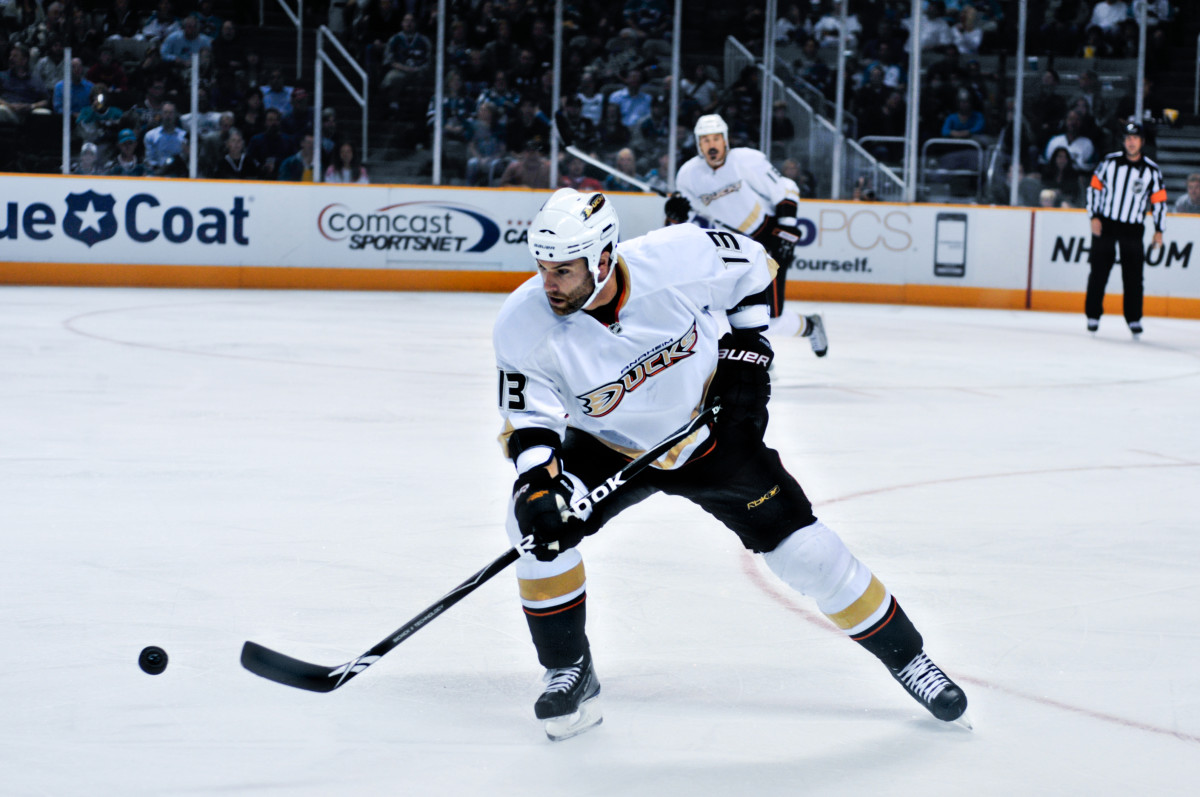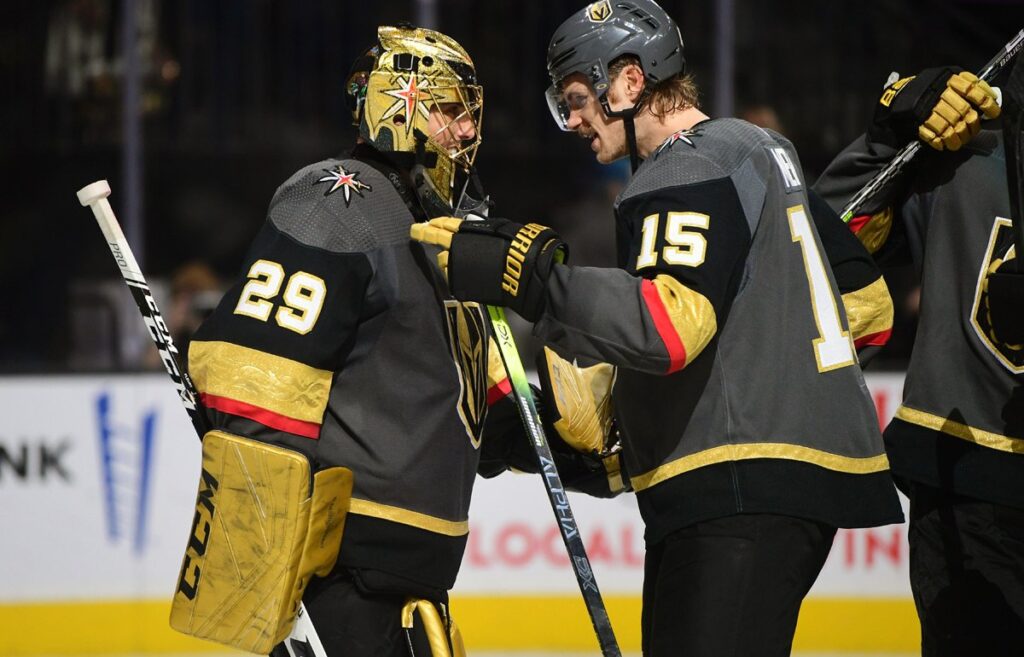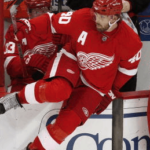To get into hockey, start by learning the basic rules and gear up with essential equipment. Join a local team or take lessons.
Hockey is an exhilarating sport that offers both physical and mental benefits. Understanding the fundamental rules is crucial for a good start. Invest in quality equipment like skates, a stick, and protective gear to ensure safety and performance. Local hockey clubs often provide beginner lessons, making it easy to learn and improve.
Watching professional games can also enhance your understanding and passion for the sport. Engaging with the hockey community will help you develop skills and make new friends. With dedication and practice, you can enjoy the excitement and camaraderie that hockey brings.

Credit: discover.hubpages.com
Introduction To Hockey
Hockey is an exciting and fast-paced sport that many people enjoy. Learning the basics of hockey can be fun and rewarding. This guide will help you understand the game’s history and its global popularity.
History Of Hockey
Hockey has a long and rich history. The game originated in the 19th century. It began in Canada and spread quickly. The first organized game was played in Montreal in 1875. Over time, the sport evolved and new rules were created. Today, hockey is known worldwide and has many forms.
| Year | Event |
|---|---|
| 1875 | First organized game in Montreal |
| 1917 | Founding of the NHL |
| 1920 | Hockey included in the Olympics |
Popularity Around The World
Hockey is popular in many countries. It is especially loved in Canada, the USA, and Russia. European countries like Sweden and Finland also have strong hockey cultures. The sport is growing in Asia and other parts of the world.
- Canada: Known as the birthplace of hockey.
- USA: Home to many NHL teams.
- Russia: Famous for producing skilled players.
- Sweden: Strong national team and leagues.
- Finland: Known for excellent goalies.
Hockey’s popularity is increasing globally. More people are playing and watching the sport. The International Ice Hockey Federation (IIHF) supports this growth. They help organize tournaments and promote the game worldwide.
Hockey is a thrilling sport with a rich history and global appeal. Understanding its roots and popularity can enhance your enjoyment of the game.
Essential Gear
Starting hockey needs the right gear. Proper equipment keeps you safe. It also helps you play better. Here is what you need.
Skates And Sticks
Hockey skates are very important. They must fit well. Poorly fitting skates can hurt. They can also slow you down.
Hockey sticks come in different sizes. Choose one that matches your height. Sticks also come in different materials. Wood, composite, and carbon fiber are common choices.
Protective Equipment
Helmets protect your head. Make sure the helmet fits. It should be snug but comfortable.
Shoulder pads protect your upper body. They cushion hits and falls. Elbow pads protect your elbows. They also cover part of your arms.
Gloves keep your hands safe. They also help you grip the stick. Shin guards protect your lower legs. They fit inside your socks.
Mouthguards protect your teeth. Some players also wear face shields. These protect your face from pucks and sticks.
| Equipment | Purpose |
|---|---|
| Helmet | Protects the head |
| Shoulder Pads | Protects the upper body |
| Elbow Pads | Protects elbows and arms |
| Gloves | Protects hands and improves grip |
| Shin Guards | Protects lower legs |
| Mouthguard | Protects teeth |
| Face Shield | Protects face |
Basic Rules And Regulations
Getting into hockey can be exciting and fun. Understanding the basic rules and regulations helps you enjoy the game more. Knowing these rules also makes it easier to play or watch hockey. Let’s dive into the essentials of hockey.
Game Structure
The game of hockey is played on an ice rink. There are two teams, each with six players on the ice. The players include one goalie and five skaters. The aim is to score goals by hitting a puck into the opponent’s net.
The game consists of three periods. Each period is 20 minutes long. There are two intermissions, each lasting 15 minutes. If the game is tied, it goes into overtime. Overtime is a sudden-death period, meaning the first team to score wins.
| Number of Players | Game Periods | Overtime |
|---|---|---|
| 6 per team | 3 periods of 20 minutes | Sudden-death |
Common Penalties
Penalties are given for breaking the rules. There are minor, major, and misconduct penalties. Minor penalties last for 2 minutes. Major penalties last for 5 minutes. Misconduct penalties last for 10 minutes.
Some common penalties include:
- Tripping – Using a stick or body to trip an opponent.
- Hooking – Using the stick to slow down an opponent.
- Slashing – Hitting an opponent with the stick.
- High-sticking – Using the stick above shoulder height.
- Boarding – Checking an opponent into the boards.
Players serving penalties sit in the penalty box. Their team plays short-handed until the penalty is over. This can make it easier for the other team to score.

Credit: m.youtube.com
Learning To Skate
Learning to skate is the first step to playing hockey. It’s essential to feel comfortable on the ice.
Basic Techniques
Mastering basic skating techniques is vital for beginners. Start with these steps:
- Standing Up: Begin by learning how to stand on the ice.
- Balancing: Keep your knees bent and your back straight.
- Gliding: Push off with one foot and glide on the other.
- Stopping: Use the snowplow stop to come to a halt.
Practice Drills
Regular practice helps improve your skating skills. Try these drills:
- Forward Skating: Skate forward, focusing on smooth strides.
- Backward Skating: Practice skating backward to improve agility.
- Crossovers: Learn crossovers to navigate turns effectively.
- Figure Eights: Skate in a figure-eight pattern to enhance control.
| Drill | Description |
|---|---|
| Forward Skating | Skate forward, focusing on smooth strides. |
| Backward Skating | Practice skating backward to improve agility. |
| Crossovers | Learn crossovers to navigate turns effectively. |
| Figure Eights | Skate in a figure-eight pattern to enhance control. |
Skating drills help build confidence on the ice. Regular practice makes perfect.
Stickhandling Skills
Learning to stickhandle is key for every hockey player. It helps control the puck and outsmart opponents. Developing good stickhandling skills can set you apart. This section will guide you through the essentials.
Grip And Stance
Having the right grip and stance is crucial. Your top hand should grip the stick lightly. The bottom hand should hold it firmly. This allows for better control and flexibility.
Stand with your knees slightly bent. Keep your feet shoulder-width apart. This ensures balance and readiness to move.
| Top Hand | Bottom Hand | Stance |
|---|---|---|
| Light Grip | Firm Grip | Knees Bent |
| Flexible Wrist | Stable Wrist | Feet Shoulder-width Apart |
Dribbling Drills
Dribbling drills help improve your stickhandling. Start with simple exercises. Move the puck side to side using only your wrist.
Gradually increase speed as you get better. Focus on controlling the puck. Use cones to create an obstacle course. Navigate through the cones without losing the puck.
Practice these drills regularly. This will build muscle memory. Your stickhandling skills will improve over time.
Shooting Techniques
Mastering shooting techniques is vital for every hockey player. Proper shooting increases your goal-scoring chances. Focus on learning different types of shots. Here, we cover two key shooting techniques: the wrist shot and the slap shot.
Wrist Shot
The wrist shot is quick and accurate. It’s perfect for close-range scoring. To perform a wrist shot:
- Place the puck near the blade’s heel.
- Shift your weight to the back leg.
- Snap your wrists as you shift weight forward.
- Follow through with the stick pointing at the target.
Practicing wrist shots improves your precision and speed. Focus on your wrist snap for more power.
Slap Shot
The slap shot is powerful and effective from a distance. Here’s how to execute a slap shot:
- Position the puck slightly in front of you.
- Draw the stick back high.
- Strike the ice just behind the puck.
- Follow through with the stick towards the target.
The slap shot requires strength and timing. Practice regularly to improve your accuracy and power.
Understanding Team Play
Understanding team play is crucial for anyone new to hockey. Hockey is a fast-paced game that relies heavily on teamwork and strategy. Learning both offensive and defensive strategies will help improve your game and make you a valuable team member.
Offensive Strategies
Offense in hockey is about scoring goals. Your team must work together to move the puck up the ice and create scoring opportunities.
- Passing: Quick and accurate passes keep the defense off balance.
- Positioning: Always be in a good position to receive the puck.
- Communication: Talk to your teammates to coordinate plays.
Using these strategies can help your team score more goals. Remember, every player has a role in the offensive play.
Defensive Strategies
Defense is just as important as offense. Good defense can stop the other team from scoring and turn defense into offense.
- Blocking: Use your body to block shots and passes.
- Stick Checking: Use your stick to take the puck away.
- Positioning: Always be between the puck and your goal.
Effective defense requires teamwork and communication. Every player must know their defensive responsibilities.
| Offensive Strategies | Defensive Strategies |
|---|---|
| Passing | Blocking |
| Positioning | Stick Checking |
| Communication | Positioning |
Joining A Team
Getting into hockey is exciting, and joining a team is a big step. This section will guide you through finding local leagues and preparing for tryouts. Being part of a team helps improve your skills and makes the game more enjoyable.
Finding Local Leagues
Start by searching for local hockey leagues. You can use online resources or ask at local sports centers. Check community boards for team announcements.
Here are some tips to find the right league:
- Visit local ice rinks and ask about leagues.
- Look for hockey clubs on social media.
- Ask friends or family who play hockey.
Many leagues cater to different age groups and skill levels. Ensure you choose one that fits your needs.
Preparing For Tryouts
Once you find a league, the next step is preparing for tryouts. These tips will help you get ready:
- Practice regularly to improve your skills.
- Stay fit with cardio and strength training.
- Learn the basic rules of hockey.
- Get proper equipment like skates, pads, and a helmet.
Here is a simple table for essential equipment:
| Equipment | Purpose |
|---|---|
| Skates | For moving on ice |
| Helmet | Protects your head |
| Pads | Protects your body |
Arrive early on tryout day to warm up. Listen to the coaches and give your best effort. This shows your dedication to the sport.
Staying Safe
Hockey is an exciting sport, but safety is crucial. Proper safety measures ensure you enjoy the game and avoid injuries. This section covers Injury Prevention and Hydration and Nutrition to keep you safe.
Injury Prevention
Injury prevention is vital in hockey. Follow these steps to stay safe:
- Wear proper gear: Helmet, shoulder pads, gloves, and shin guards.
- Warm-up: Spend 10 minutes warming up before games.
- Stretch: Stretch your muscles after warming up.
- Learn proper techniques: Take lessons from a coach.
- Stay aware: Always watch the puck and other players.
These steps can reduce the risk of injuries on the ice.
Hydration And Nutrition
Proper hydration and nutrition are key to staying safe and performing well:
| Hydration Tips | Nutrition Tips |
|---|---|
| Drink water before, during, and after games. | Eat balanced meals with proteins and carbs. |
| Avoid sugary drinks; they dehydrate you. | Include fruits and vegetables in your diet. |
| Carry a water bottle during practice. | Have a light snack before playing. |
Good hydration and nutrition improve performance and reduce fatigue.

Credit: www.youtube.com
Advanced Tips And Tricks
Are you ready to take your hockey skills to the next level? Advanced tips and tricks can help you become a more dynamic player. Focus on improving speed and enhancing agility to dominate the rink. Here are some expert tips:
Improving Speed
Speed is crucial in hockey. Faster players often control the game. Use these tips to boost your speed:
- Interval Training: Alternate between high and low-intensity skating. This builds endurance and speed.
- Strength Training: Focus on leg muscles. Strong legs push you faster on the ice.
- Proper Technique: Bend your knees and lean forward. This makes your strides more powerful.
- Skating Drills: Incorporate sprints and stops in your routine. This improves quickness and control.
Enhancing Agility
Agility helps you maneuver around opponents. Improve your agility with these methods:
- Plyometric Exercises: Jumping drills boost explosive power. Practice box jumps and lateral jumps.
- Edge Work: Practice using your skate edges. This helps in sharp turns and quick stops.
- Stickhandling Drills: Use cones to weave through. This enhances puck control and movement.
- Balance Training: Use balance boards or stability balls. This improves overall coordination.
Implement these advanced tips and tricks to elevate your hockey game. Consistent practice leads to noticeable improvements on the ice.
Conclusion
Starting hockey can be rewarding and fun. Follow the steps mentioned to ease into the sport. Equip yourself properly, practice regularly, and join a local league. Soon, you’ll find yourself enjoying the game and improving your skills. Embrace the challenge and excitement that hockey offers.
Happy playing!


